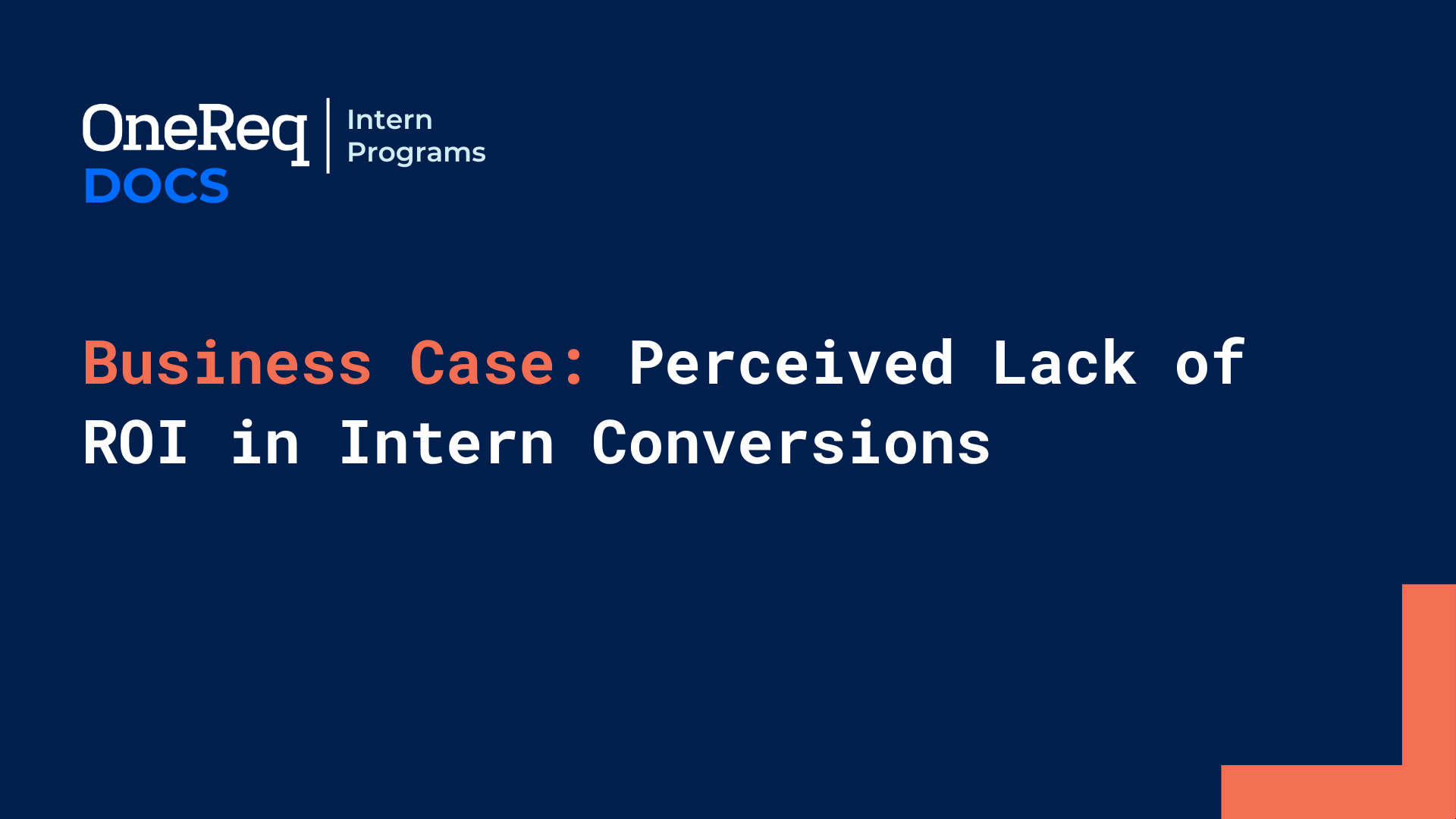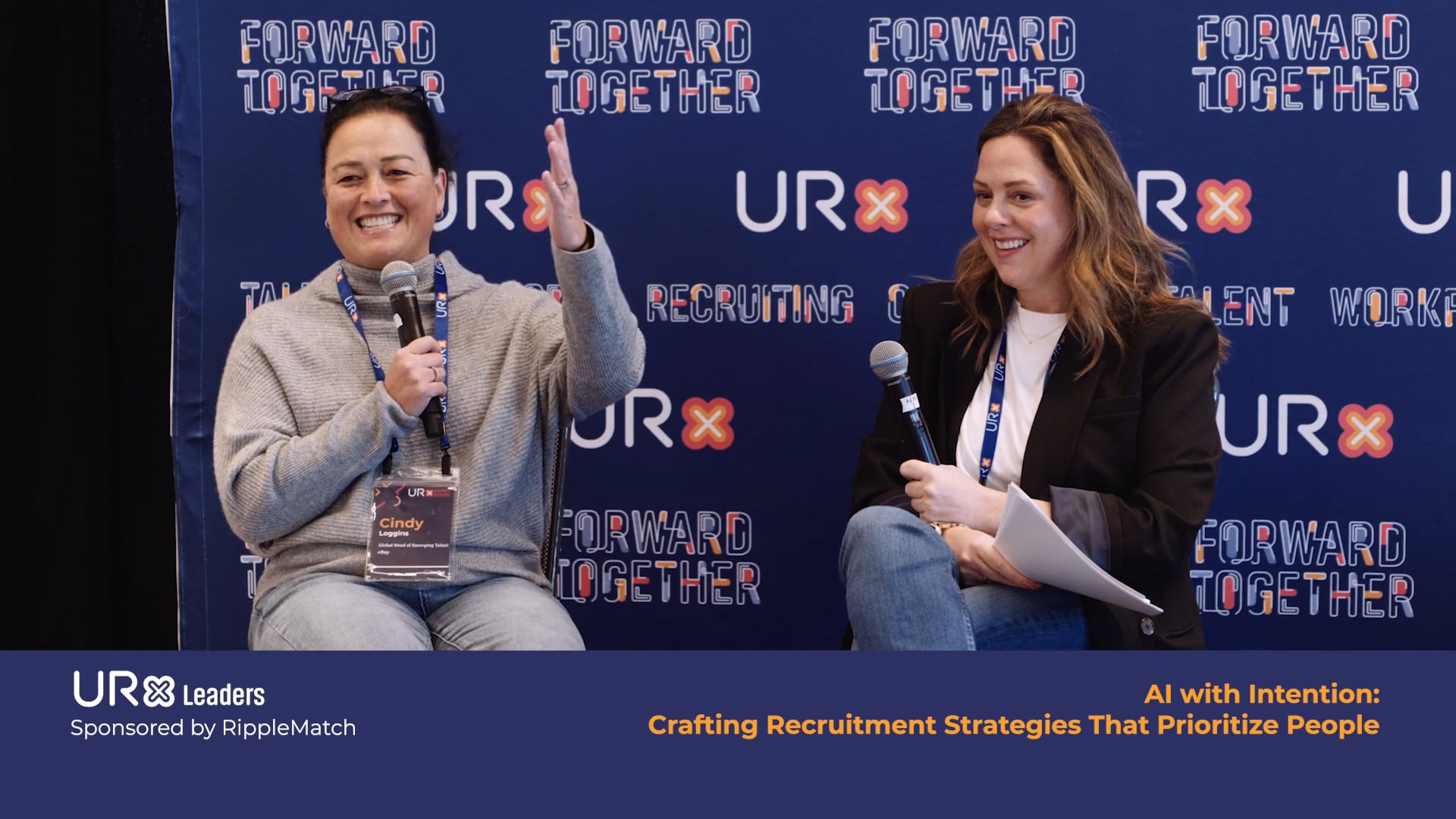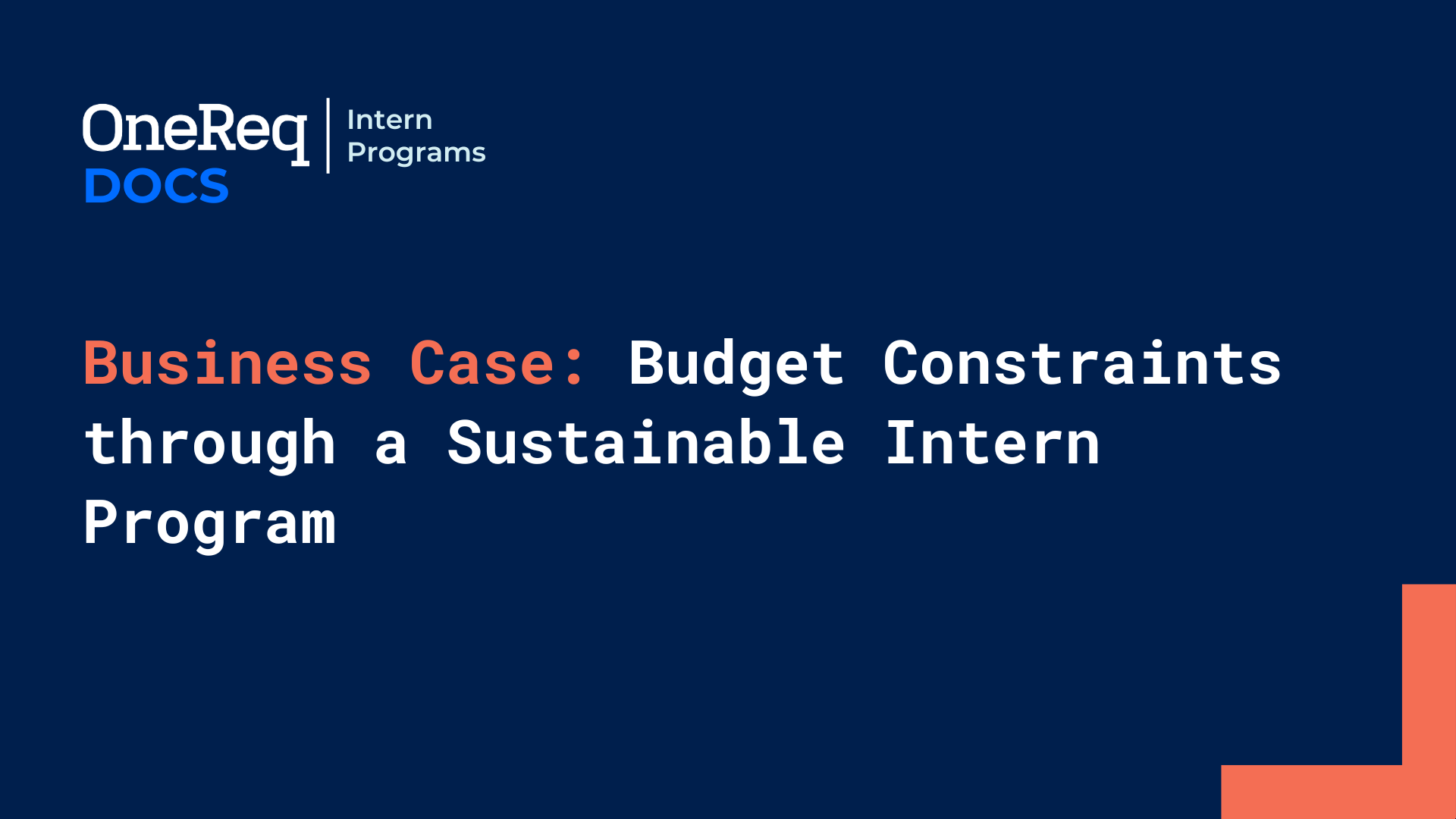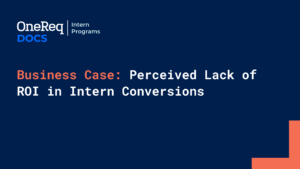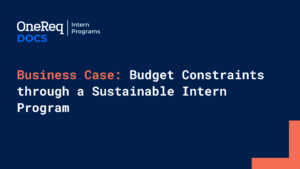Introduction: Overview of the Intern Program and Its Goals
The intern program is designed to provide valuable hands-on experience to emerging talent, while also allowing the company to assess potential future hires. It aims to develop a strong talent pipeline for critical roles and foster a culture of growth and innovation. A key objective of the program is to convert high-performing interns into full-time employees who align with the company’s hiring needs.
However, a challenge has emerged in which the skills or roles needed for future teams do not necessarily align with the expertise or qualifications of our current interns, which makes conversions to full-time positions impractical. This misalignment creates a need to reassess the intern program’s structure and approach to workforce planning.
Intern Conversion: The Challenge
Intern conversion is a vital part of the program’s success. However, the misalignment between the interns’ current skills and the roles required by future teams presents a significant hurdle in converting interns into full-time employees. The skills gaps make it difficult to align interns with positions that are available or planned for the organization’s growth.
Proposed Solution(s)
- Identify Misalignment and Skills Gap with Teams and HRBPs:
- Conduct a thorough assessment of the skills and qualifications of the current interns compared to the skills and roles required for future hiring needs. Engage HR business partners (HRBPs) and hiring managers to identify where the gaps are and where opportunities might exist for skills development.
- Conduct a thorough assessment of the skills and qualifications of the current interns compared to the skills and roles required for future hiring needs. Engage HR business partners (HRBPs) and hiring managers to identify where the gaps are and where opportunities might exist for skills development.
- Provide Resources to Bridge the Gap:
- Explore opportunities to bridge the skills gap through targeted training programs, mentorship, or hands-on projects. Consider both internal and external resources, such as:
- Internal training or upskilling programs tailored to the specific skills required by teams.
- External courses, certifications, or partnerships that could provide interns with the necessary competencies.
- Explore opportunities to bridge the skills gap through targeted training programs, mentorship, or hands-on projects. Consider both internal and external resources, such as:
- Leverage Transferable Skills Across Interns and Teams:
- Identify opportunities for interns to gain experience across different teams or departments to develop transferable skills. This approach could help position interns for roles that may not directly align with their initial assignments but require similar foundational competencies.
- Expand the intern pool to include candidates with diverse degrees or backgrounds who may bring a fresh perspective and skill set.
- HRBP and Manager Assistance with Career Pathing:
- Collaborate with HRBPs and managers to help guide interns toward potential career paths within the company. This process can help interns see potential growth opportunities and identify how their current experiences can be adapted to the company’s future needs.
- Collaborate with HRBPs and managers to help guide interns toward potential career paths within the company. This process can help interns see potential growth opportunities and identify how their current experiences can be adapted to the company’s future needs.
- Realign the Intern Profile for Future Programs:
- Based on the feedback from current interns and the skills needed by the business, revise the profile of interns sought in the future. This could include targeting candidates with specific skill sets that align more closely with the company’s strategic goals.
- Focus on next-generation (NG) talent, early career individuals, or even Master’s level candidates who possess the skills needed for the company’s evolving workforce.
- Based on the feedback from current interns and the skills needed by the business, revise the profile of interns sought in the future. This could include targeting candidates with specific skill sets that align more closely with the company’s strategic goals.
Benefits
- Reserve Company Brand on Campus: A well-aligned intern program helps to strengthen the company’s employer brand, making it an attractive place for top talent to apply. Maintaining a successful program is key to preserving a strong reputation in the talent marketplace.
- Maintain Conversion Rates: By addressing the skills gap and providing resources to bridge it, we can improve the likelihood of converting interns into full-time hires, helping to retain top talent within the organization.
- Talent Sharing and Cross-Training: By offering interns opportunities to work across different teams or departments, we create a more adaptable workforce, improving internal talent mobility and cross-training. This can benefit the company by ensuring that talent is developed for a variety of future needs.
ROI: Success Metrics to Showcase Return on Investment
- Conversion Rate:
- Track the percentage of interns who transition into full-time employees. A higher conversion rate indicates the program’s success in developing and aligning interns with critical roles within the company.
- Track the percentage of interns who transition into full-time employees. A higher conversion rate indicates the program’s success in developing and aligning interns with critical roles within the company.
- Retention and Attrition:
- Measure the retention rates of interns who are hired full-time and their performance compared to other employees. This data will show if the program is successful in identifying long-term talent.
- Measure the retention rates of interns who are hired full-time and their performance compared to other employees. This data will show if the program is successful in identifying long-term talent.
- Overall Business Impact:
- Assess the contribution of interns to the organization’s goals and business results. Evaluate how the skills acquired during the internship have been leveraged in their full-time roles.
- Assess the contribution of interns to the organization’s goals and business results. Evaluate how the skills acquired during the internship have been leveraged in their full-time roles.
- Brand Recognition:
- Monitor how the company’s employer brand is perceived on campuses and among job seekers. Track metrics such as social media engagement, university partnerships, and candidate application rates to measure the program’s impact on brand visibility.
Call to Action: Clear, Actionable Next Steps
To implement the proposed solutions and address the misalignment with workforce planning, the following actionable steps should be taken:
- Assess and Identify the Skills Gap: Conduct a company-wide audit with HRBPs and hiring managers to identify specific skills gaps and align the internship program with current and future workforce planning needs.
- Provide Resources to Bridge the Gap: Collaborate with HRBPs and learning & development teams to create tailored training programs or learning resources to help interns bridge skills gaps and improve their alignment with company needs.
- Align Intern Profile for Next Year: Begin adjusting the profile of future interns based on the feedback collected, focusing on targeting next-generation talent with the skills that are currently needed in the company. Reassess the program’s reach and ensure it is tailored to meet strategic workforce goals.
- Build a Timeline for Decision-Making: Develop a clear timeline to make decisions based on solutions 1-3, including key milestones for assessing intern profiles, training program development, and realignment of workforce planning.
By following these steps, the intern program can be better aligned with the company’s hiring strategy, ensuring a future talent pipeline that addresses workforce planning and contributes to long-term organizational success.


